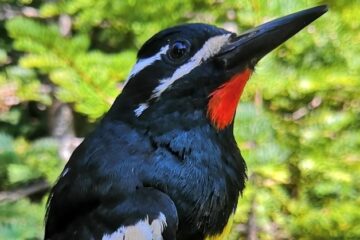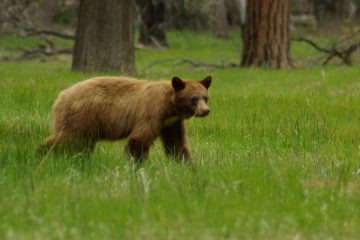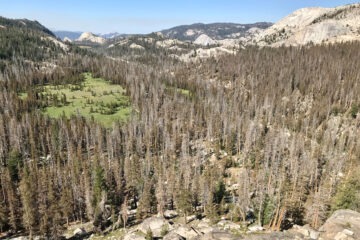Above: Looking across Middle Gaylor Lake. Photo: Yosemite Conservancy/Keith Walklet.
While waterfalls make a scenic splash in Yosemite Valley, lakes are the aquatic stars of the high country. The park’s more than 2,000 lakes glitter at the base of granite peaks, nestle in tree-lined bowls and dot subalpine meadows.
Regardless of their size or splendor, all of Yosemite’s lakes hold high ecological value. They provide habitat for diverse plants and animals, and store a critical resource: fresh surface water. Fed by rain, snow and melting glacial ice, they temper deluges and recharge groundwater. Beyond their environmental role, the park’s lakes have clear aesthetic appeal. Their often-secluded settings invite quiet moments of reflection and deep connections with the natural world. Stay long enough, and you might see frogs swimming in the shallows, birds landing on nearby branches, or deer ambling along the shore.
Yosemite’s high country lakes are undeniably important and inspiring, but they’re not immune to natural and human-caused impacts — and that’s where your support comes in. Join us on a high-elevation journey to see how donors’ gifts have helped restore and protect lake ecosystems.
SHORT JAUNTS
For a quick outing, stop by one of these high-elevation gems, all located less than 1.5 miles from Tioga Road.
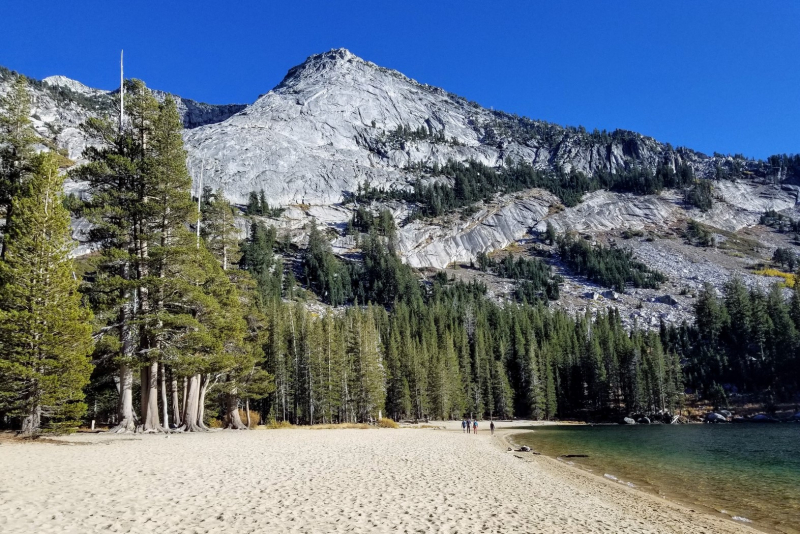
At Tenaya Lake, just south of Tioga Road, you can swim, paddle or lounge in the sand … and see evidence of several years of donor-funded restoration work. Look for an accessible path and picnic area at the eastern beach, a scenic trail along the south shore, a boardwalk at the west end and wetland plants flourishing along the edges.
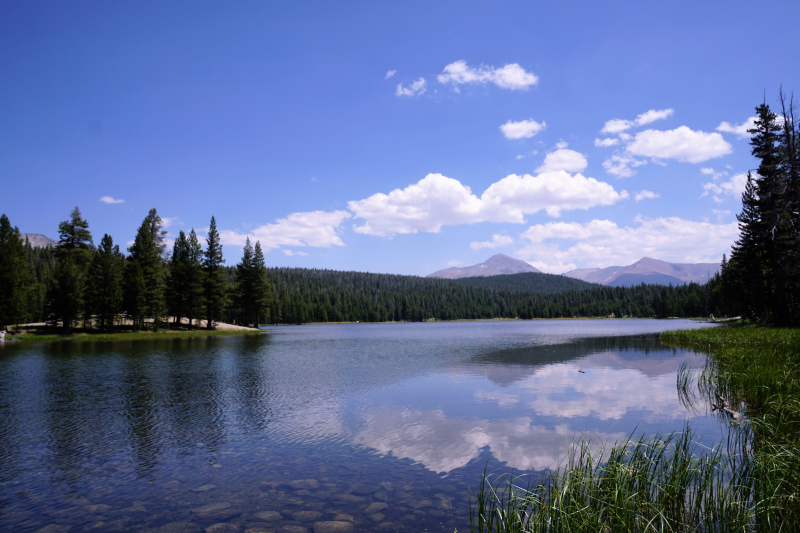
Just 1.4 miles from Tioga Road, Dog Lake’s serene, forested basin offers a quiet setting, views of distant domes and the chance to get a rare glimpse of a once-common animal: the Sierra Nevada yellow-legged frog. A group of yellow-legged frogs was released at Dog Lake in 2016 as part of a grant-supported effort to restore the park’s population of the endangered amphibians, which are found only in their eponymous mountains.
While you might spot frogs here, don’t count on seeing any dogs. The lake was purportedly named for a litter of puppies found nearby in the 1800s, but is off-limits for today’s domestic canines — dogs are allowed in Yosemite’s developed areas, on paved paths and in some campgrounds, but not on unpaved trails or in wilderness areas.
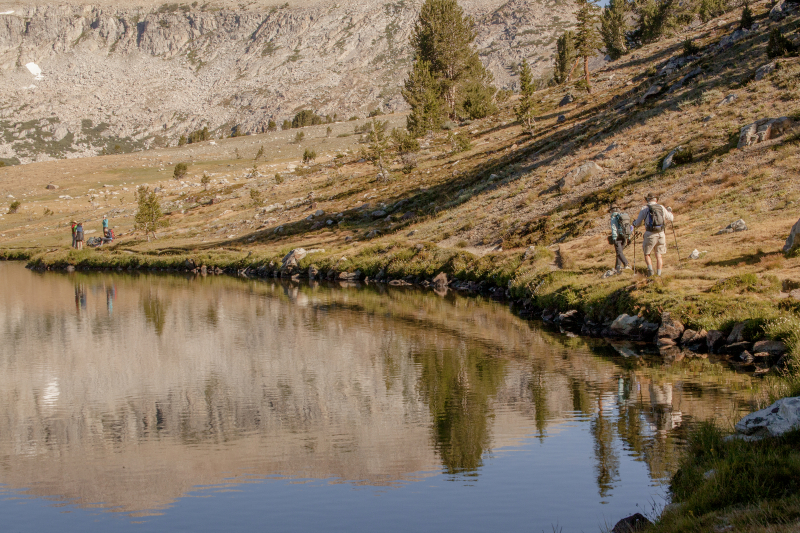
Take a short, steep hike over the ridge beside the Tioga Pass Entrance to access Gaylor Lakes Basin. Pause at the top to appreciate the impressive nearby peaks, including Dana, Mammoth and Gibbs, and then drop down into the basin, home to multiple lakes, an old silver mine and spectacular views of the Cathedral Range.
As you follow the trail, restored in 2013 thanks to a donor-funded project, listen for the cheep cheep of pikas in the rocky lakeside talus fields.
LONGER TREKS
Many of Yosemite’s high country lakes are located far from roads and trailheads — but these wilderness treasures are worth the trek.
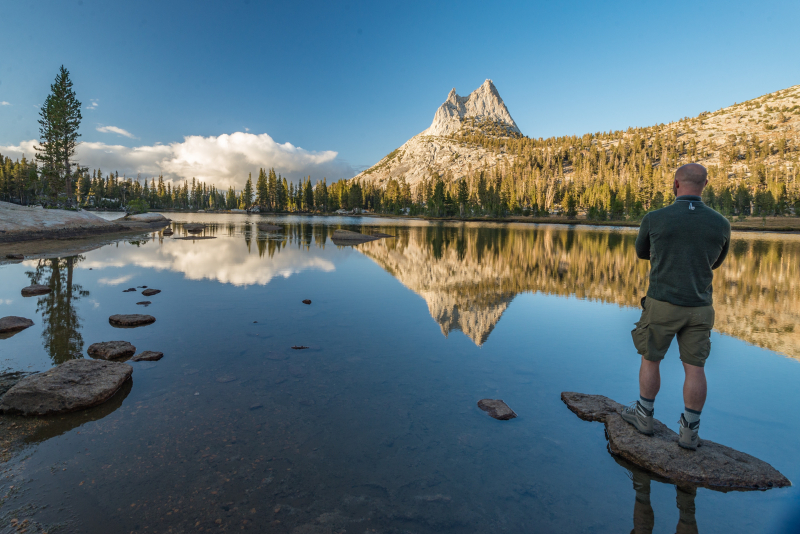
Take a 7- to 8-mile round-trip hike south from Tuolumne Meadows to Cathedral Lakes, a pair of liquid mirrors surrounded by soaring peaks. Here, evidence of donor-supported work will be in what you don’t see.
Until recently, the trail near the upper lake cut through a wetland and sensitive meadows. Up higher, informal paths crisscrossed Cathedral Peak, a popular climbing destination. Grant-funded projects rerouted the trail into a forested area, restored the rutted meadow, and delineated formal approach and descent routes for the peak.
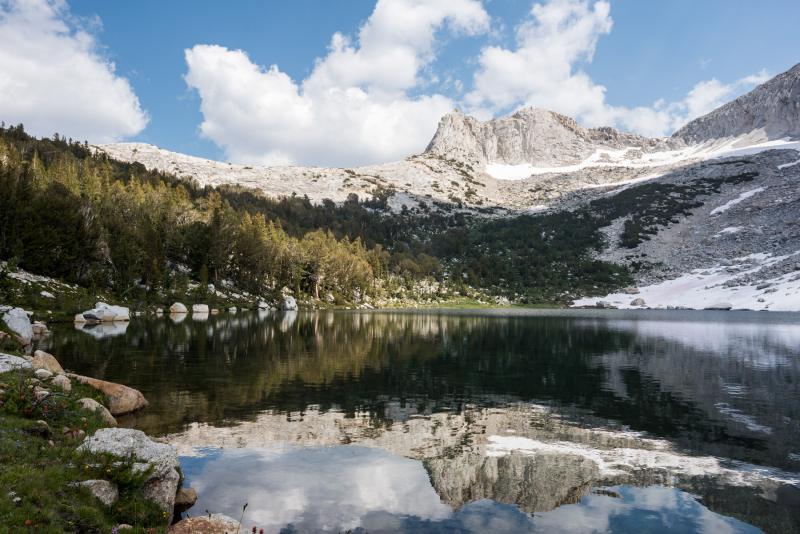
Want to head deeper into the Yosemite Wilderness? On the approximately 14-mile trek north from Tuolumne meadows along the Pacific Crest Trail (PCT) toward McCabe Lakes, you’ll tread terrain that donor-supported California Conservation Corps (CCC) crews have made more hiker- and habitat-friendly. Looking to cover even more ground? Follow the PCT another 14 miles west from near the McCabe Lakes trail junction toward Benson Lake, the sandy-beached “Riviera of the Sierra” that sometimes serves as a seasonal CCC basecamp.
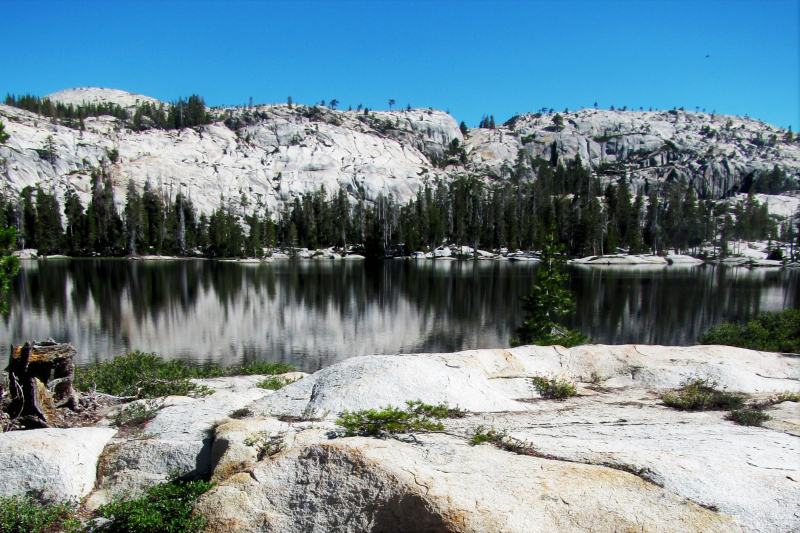
If you’re up for an extra-long excursion, venture toward Yosemite’s outskirts to see some of the aquatic jewels gleaming near the park’s boundary. Navigate to Many Island Lake on Yosemite’s northwest edge, or to Chain Lakes in the southeast corner; at both locations, donor-supported Keep It Wild crews have restored habitat and erased impacts from informal campsites.
Or head to northeastern Onion Lake, where botanists identified two notable plant species — tall draba and moonwort fern — as part of a grant-funded study to document aquatic flora.
Ready to experience Yosemite’s high country lakes? Mountain lakes are tempting places to cool off and rehydrate during or after a long hike, and their glassy surfaces and picturesque shores beckon backcountry campers.
Swimming is allowed in most bodies of water in Yosemite (exceptions include Hetch Hetchy Reservoir and surrounding tributaries; Lake Eleanor, when posted; the Tuolumne River’s Dana Fork; and Emerald Pool and Silver Apron near Vernal Fall). With natural hazards, cold water and no lifeguards on duty, however, you should take extra precautions before taking the plunge.
Look for potential hazards, such as currents, submerged branches and small gaps between rocks. Even seemingly slow-moving water can pull you downstream or toward an obstacle faster than you can swim to safety. Test the temperature before you step in to wade or swim — high-elevation water is often frigid, even on hot summer days, and can lead to hypothermia.
Need to refill your bottle or hydration bladder? Boil or filter lake and stream water before you take a sip, no matter how crystal-clear it looks. And if you’re planning an overnight trip to a backcountry lake (or anywhere in the Yosemite Wilderness), be sure to reserve a permit, and always camp and cook at least 100 feet from water.
Above all, take time to observe. Look for reflections and ripples. Identify aquatic plants and animals. Find inlets and outlets, where streams enter and leave the basin. Each lake is part of a vast, vital network that shapes the landscape and nourishes life throughout and well beyond Yosemite — and your support can help restore and protect that water-fueled world.
A version of this story appeared in the spring/summer 2018 issue of Yosemite Conservancy magazine.

